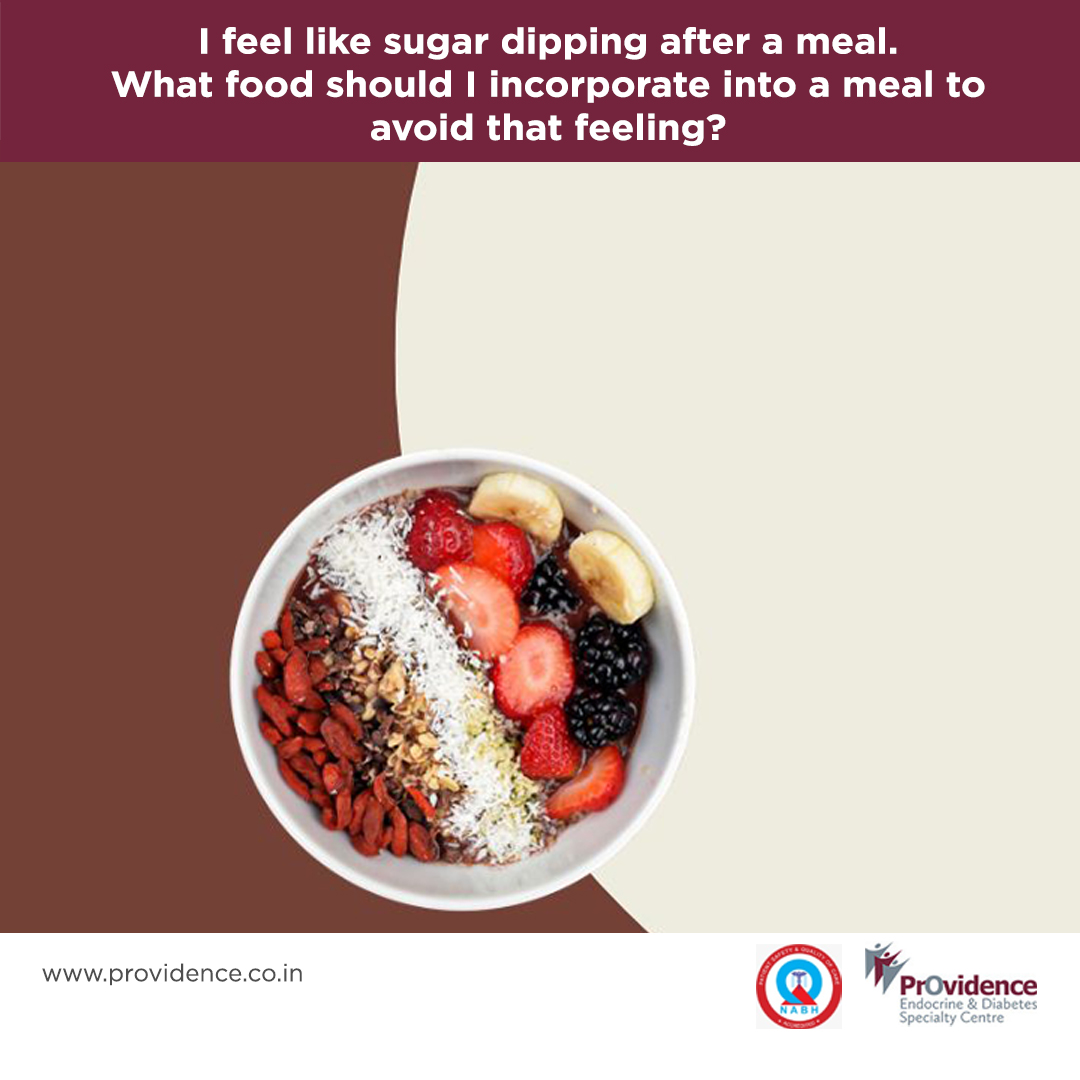Of course, many people with diabetes face a dip in sugar after a meal. A main meal consisting of high amounts of refined carbohydrates and low in dietary fiber, protein, or fat can lead to a sudden spike in blood glucose, followed by a dip in sugar levels. To prevent the variability in blood glucose after a meal, incorporate the following foods that help to stabilize your blood sugar levels.
1. Protein-rich foods : Protein-rich foods take more time for digestion and absorption. These foods provide fullness for a longer duration than carb-rich foods. Protein-rich foods include pulses and legumes, chicken, fish, eggs, Tofu, paneer, and cottage cheese should be included in the meal. Restrict red meats in the diet.
2. Complex Carbohydrates (Low-Glycemic Index Foods): Complex carbs (e.g., whole grains and vegetables) are high in fiber and digest more slowly than refined carbs (e.g., maida), thus helping manage blood sugar levels. The fibers in these foods delay the digestion and release of glucose into the bloodstream, leading to better control over blood sugar and hunger cravings throughout the day. Low GI foods include whole grains, legumes, fruits, and vegetables.
3. Healthy Fats : Fats contribute to early satiety and also slow down the digestion of food, and thus manage the glucose levels in the bloodstream. These should be consumed in the recommended quantity and used properly in cooking methods. Good sources of healthy fats are nuts and seeds, avocados, fatty fish (sardines, salmon), and olive oil.
Points to be remembered
• To avoid such episodes, follow an individualized and balanced meal pattern based on overall health status, duration of diabetes, current medicines, and physical activity.
• Avoid refined carbs and sugars, especially white bread, pasta, sugary cereals, soft drinks, and many processed snacks.
• Do not skip your meals, which can cause hypoglycemia (low sugar).
Mrs. Sreekutty S, MSc



